Power Supply for CCTV Tower
To the reference report
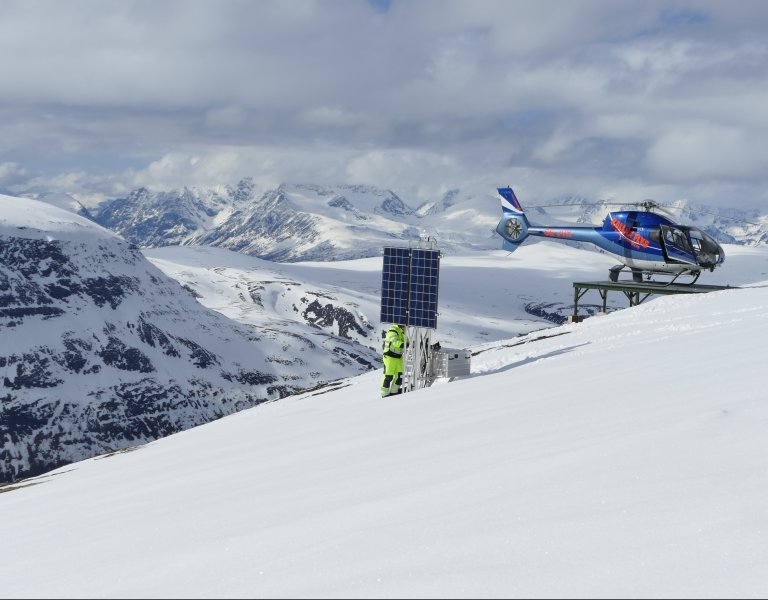
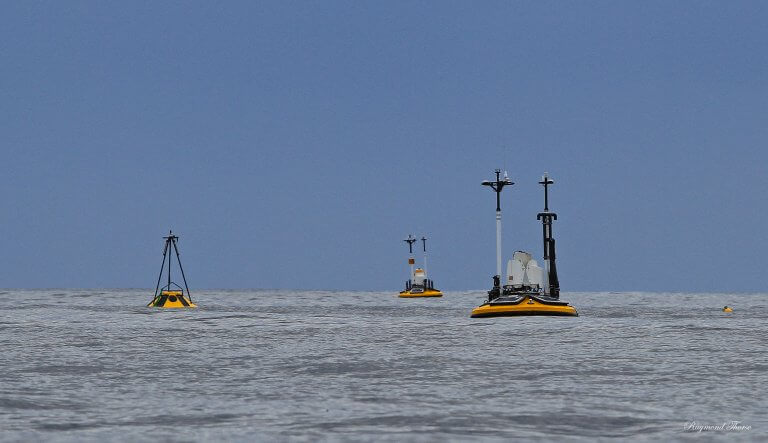

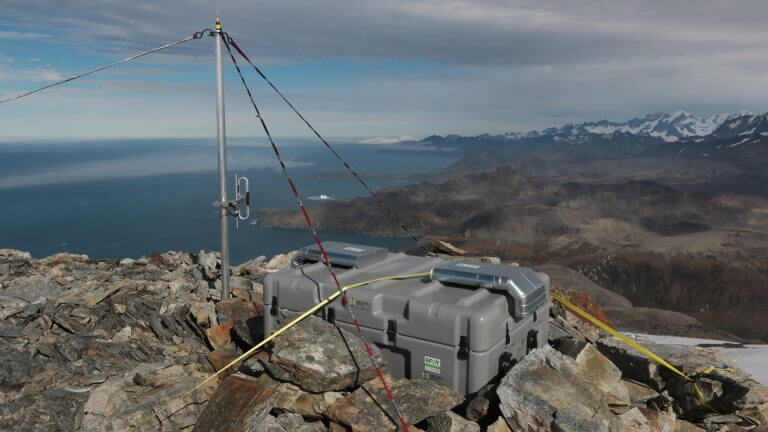
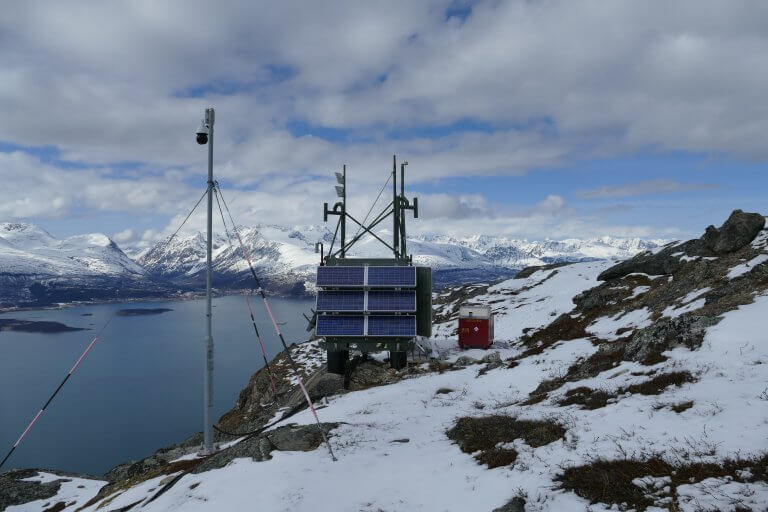


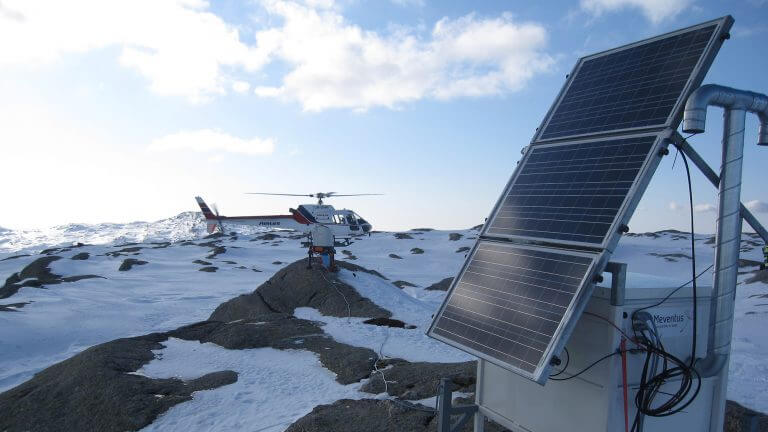



In the area of measurement technology, there are numerous different devices that reliably measure and transmit important environmental data (e.g. water levels, climate data, seismic movement or gas and radiation values).
| Power requirement | Between 200 and 2500 Wh/day |
| Autonomy requirement | Up to 12 months based on the often remote and hard-to-access position of the measuring equipment. |
The provision of reliable and off-grid power around the clock, especially in winter with little sunlight and low temperatures. Solar modules alone cannot guarantee a reliable power supply in these scenarios, in particular, in bad weather or dark times of the year.
Integration of an EFOY & EFOY Pro into a control cabinet or combination of existing solar modules and batteries with an EFOY Pro fuel cell for the reliable provision of off-grid power in any weather.
EFOY Pro fuel cells supply off-grid power for months, without maintenance and without any user intervention. A 50 W surveillance system can be powered autonomously for up to 100 days. Operating costs are lowered while recording of data is guaranteed at all times.
“The fuel cell is the most innovative solution”
For us, the fuel cell is the most innovative and, at the same time, most environmentally friendly way of reliably supplying our equipment with power. A great advantage is that the fuel cell communicates with the user in time, for example, when the fuel cartridge is running out.
Peter Noecker, Pegelbau Schröder, Germany
EFOY energy solutions used worldwide
If you are considering an off-grid power supply, please read on. Below, we cover the essentials of off-grid power systems and going it alone.
Off-grid power systems are local, stand-alone electricity generation installations not connected to regional or national supply grids. These off-grid power supply systems often use environmentally friendly or renewable energy sources.
Some smaller off-grid power systems are versatile enough to be semi-portable. Typically, these off-grid power systems work well in remote scientific expeditions, climate observation outposts, weather stations, out-of-town surveillance and traffic cameras near accident blackspots.
In contrast, more extensive or industrial off-grid supply installations are permanent and fixed. Recently, the increasing availability of photovoltaic panels means that rural and remote off-grid power systems have grown in popularity – especially with battery backup (more below).
Off-grid power systems are the only feasible supply option when mains electricity is unavailable. Laying electrical cables to tap into the distribution grid tends to be disproportionately expensive. Apart from the financial outlay, the work requires planning permission and involves disruption.
As outlined above, off-grid power systems are usually more cost-effective than extending a power line. The cost of electrical mains connection work in the US is between $15,000 and $50,000 per mile, or around €10,000 to €30,000 per kilometre [1].
However, off-grid power systems are popular with companies and individuals in less remote locations. In the wake of significant energy market uncertainties in Europe, the possibility of securing an independent supply is attractive. Moreover, recent hikes in electricity tariffs mean that off-grid power solutions make good economic sense, too.
Providing businesses or owners of residential properties have sufficient land or rooftop access to install panels, off-grid power systems are increasingly feasible. They also appeal to people’s environmental values, apart from the freedom independent energy guarantees.
Yes, this is possible. The equipment necessary depends on one’s objectives. In the simplest stand-alone off-grid power systems, the current generated by wind energy or solar power passes directly to the electrical load(s).
However, storing an electrical charge to use later when the system is not producing power is fundamental for most independent off-grid power systems. Therefore, a dedicated battery (or batteries) and a charge controller are necessary. The batteries charge when the load is not using all the current produced. Conversely, they provide short-term power when the primary system is not producing electricity.
Whether independent or not, balance-of-system equipment is necessary to filter the electricity and assure safety. The controller keeps the battery or batteries topped up without overcharging. On reaching full (or nearly full) charge, it reduces the current and diverts it to an auxiliary or shunt load, typically an electric water heater [2].
To complete the installation, measurement technology includes instrumentation and Wi-Fi connectivity to enable monitoring of electricity production.
When planning an independent or renewable energy system, it is advisable to minimise electricity consumption and optimise it to coincide with peak production times, such as sunny or breezy days. In addition, efficient appliances and well-designed heating or cooling systems are crucial [3].
For maximum efficiency, the best stand-alone off-grid power systems are those closest to the resources they use. Whether off-grid wind, solar or hydropower, the key is to combine the energy source(s) with the right technology [4].
Latitudes with long hours of sunlight are at an advantage with solar panels. In contrast, breezy regions are ideal for off-grid wind power production. Additionally, some rivers are suitable for micro-hydro power installations.
Hybrid off-grid wind power systems comprise small turbines combined with photovoltaic panels. These solar and off-grid wind energy systems provide reliable power for businesses, homes, farms or communities.
Small wind turbines in residential off-grid power systems typically produce between 400 watts and 20 kilowatts [5]. Notably, site suitability is crucial. When planning off-grid power systems, geological formations, local obstacles and possible future obstructions are key considerations. In this respect, new buildings or trees that have not reached their full height could affect wind turbine viability.
It is vital to evaluate the following:
Wind energy is not usually viable in off-grid power systems in areas with mean annual wind speeds lower than 4 metres per second (9 miles per hour or 14 kilometres per hour). [6]
Wind, photovoltaic and hybrid off-grid power systems require batteries of sufficient capacity to provide power during anticipated periods of low wind, cloudy weather and darkness. Characteristically, off-grid power systems require specialist deep-cycle batteries that can repeatedly charge and discharge up to 80 percent of their maximum capacity. Typically, these cells last for five to ten years in regular use [2].
However, automotive batteries work with shallow charge and discharge cycles. As a result, their cells are prone to damage on deep discharge, i.e., more than 20 percent of their total charge. Thus, they are unsuitable in off-grid power systems.
Some types of batteries contain acid. For safety, it is crucial to locate batteries in well-ventilated spaces, protected from extreme temperatures and away from living accommodation.
Absorbent glass mat (AGM) batteries do not contain acid and require less maintenance. However, they increase the cost of off-grid power systems [4].
EFOY Pro fuel cells offer several advantages in off-grid power systems. Power capacities range from 40 Watts for small units to 500W modules and upwards.
A versatile and innovative solution, EFOY Pro units use methanol, a relatively clean fuel with superior energy density. The independent EFOY Pro power units deliver maintenance-free power with little or no user intervention.
Inside the robust housing of EFOY off-grid power systems, an integrated controller manages battery charging automatically. When the fuel cell voltage drops to less than a set level, recharging starts automatically before switching off when complete. This optimised charging cycle extends the average battery service life by avoiding deep discharge.
There are various ways of supplying oneself independently with electricity by means of off-grid power systems. Depending on local conditions, such as wind strength and solar radiation, there are different systems that are ideally coupled. When electricity is not being produced, the grid is supplied by batteries. Using the free EFOY energy calculator, you can calculate the energy rating necessary for off-grid power systems. Alternatively, to discuss your independent energy requirements, please contact our expert team today.
The most efficient off-grid power systems are those closest to the resources being used. Whether off-grid wind, solar, or hydro, the key is to combine the energy source(s) with the right technology.[4]
Examples of an off-grid power system include the following:
Advantages of off-grid power supply systems are:
[1] https://www.energy.gov/energysaver/grid-or-stand-alone-renewable-energy-systems
[2] https://www.energy.gov/energysaver/balance-system-equipment-required-renewable-energy-systems
[3] https://energysavingtrust.org.uk/advice/off-grid/
[4] https://worldwaterreserve.com/off-grid-energy-solutions/
[5] https://energysavingtrust.org.uk/advice/off-grid/
[6] https://www.energy.gov/energysaver/installing-and-maintaining-small-wind-electric-system